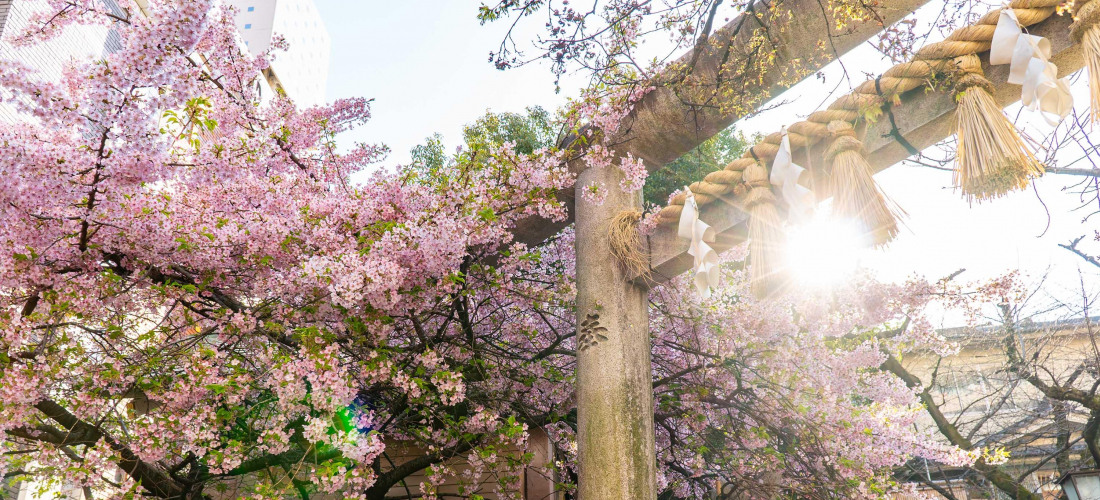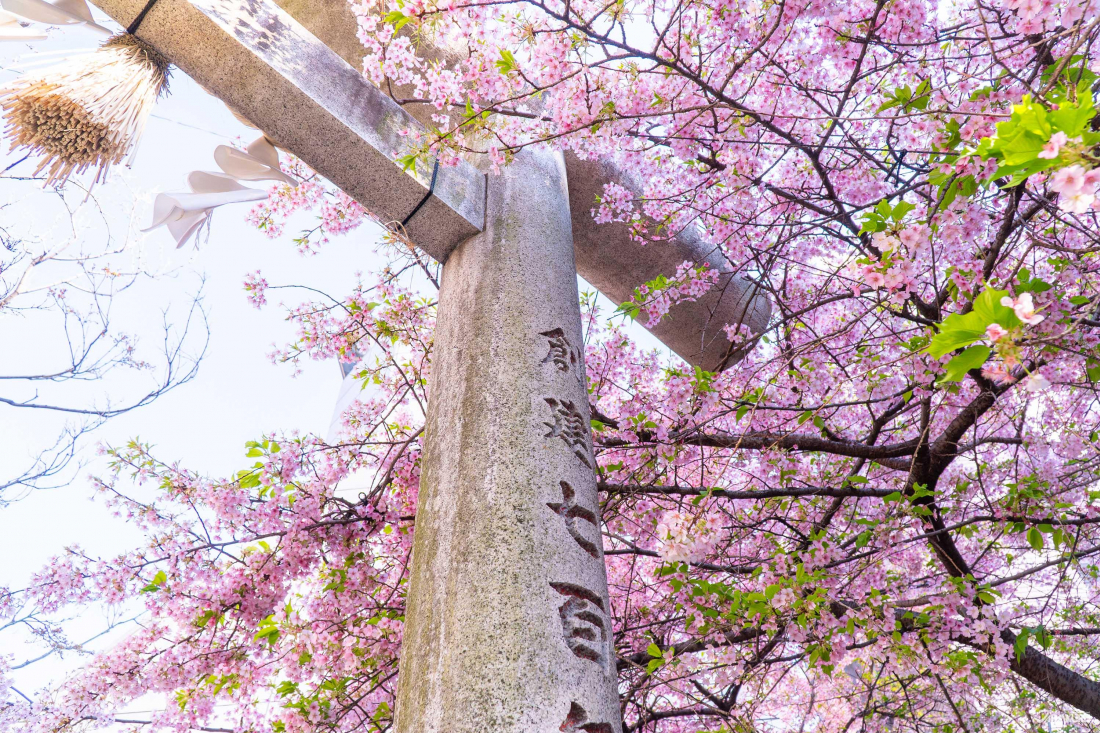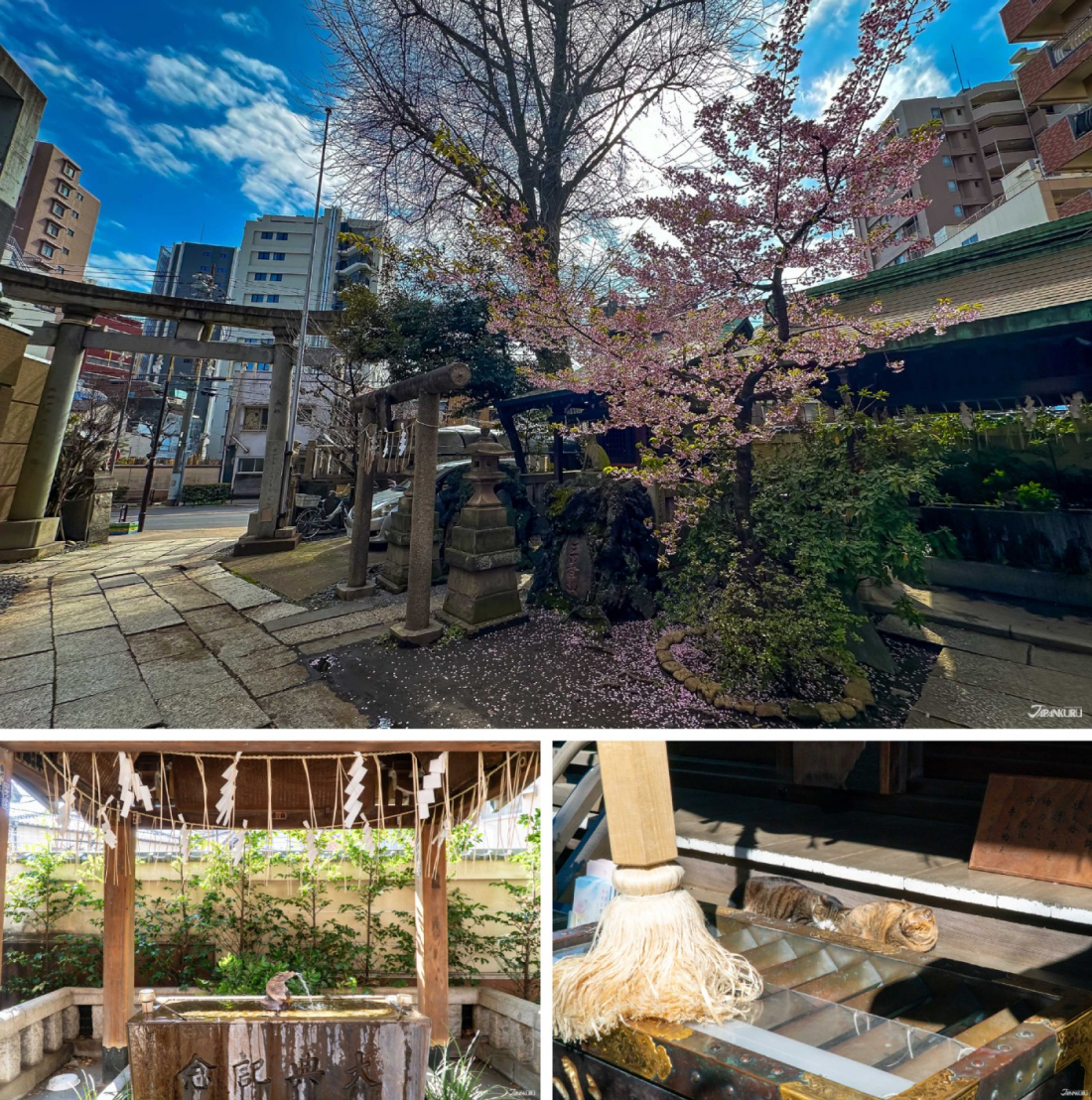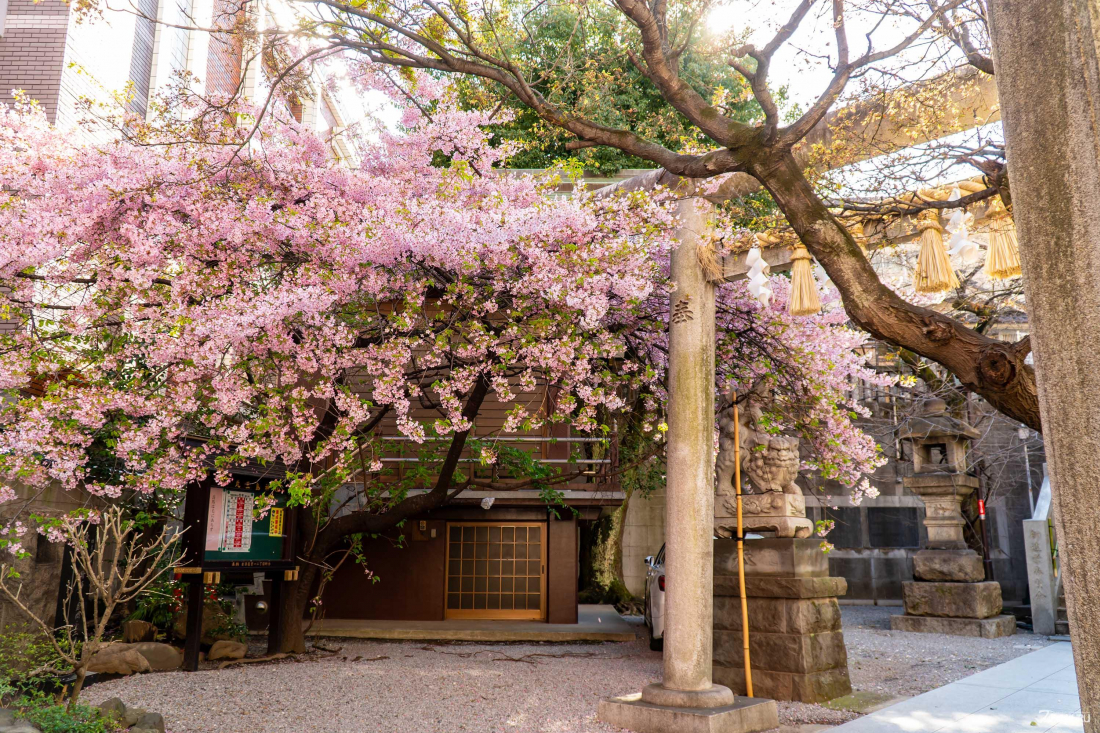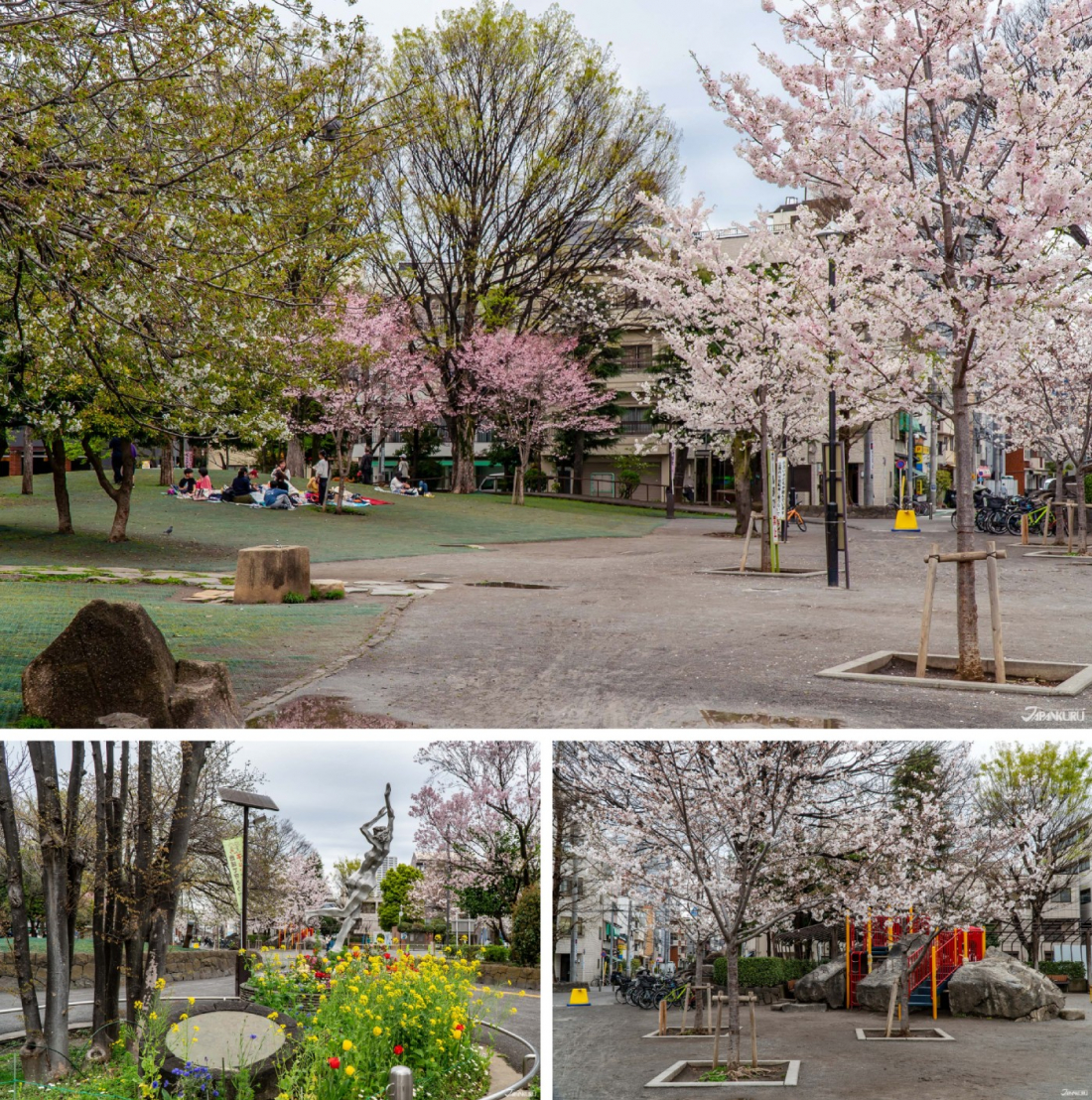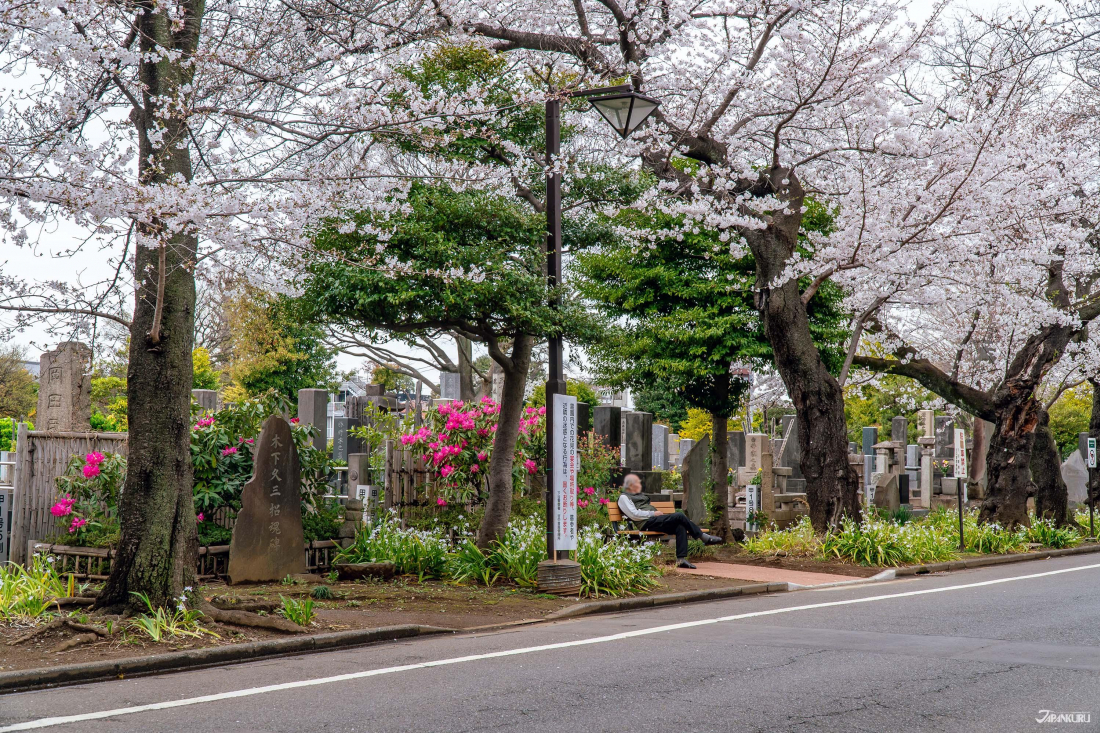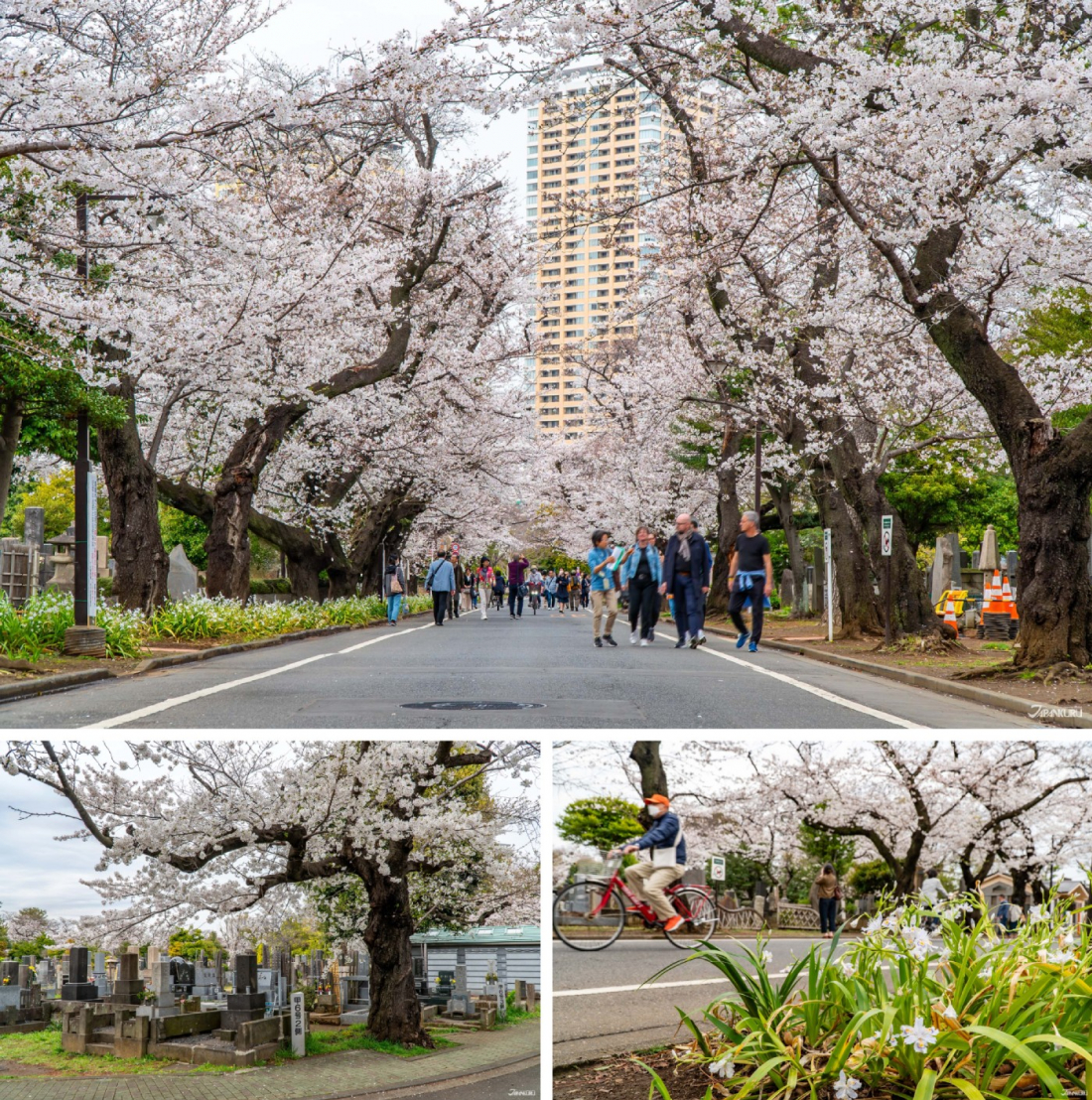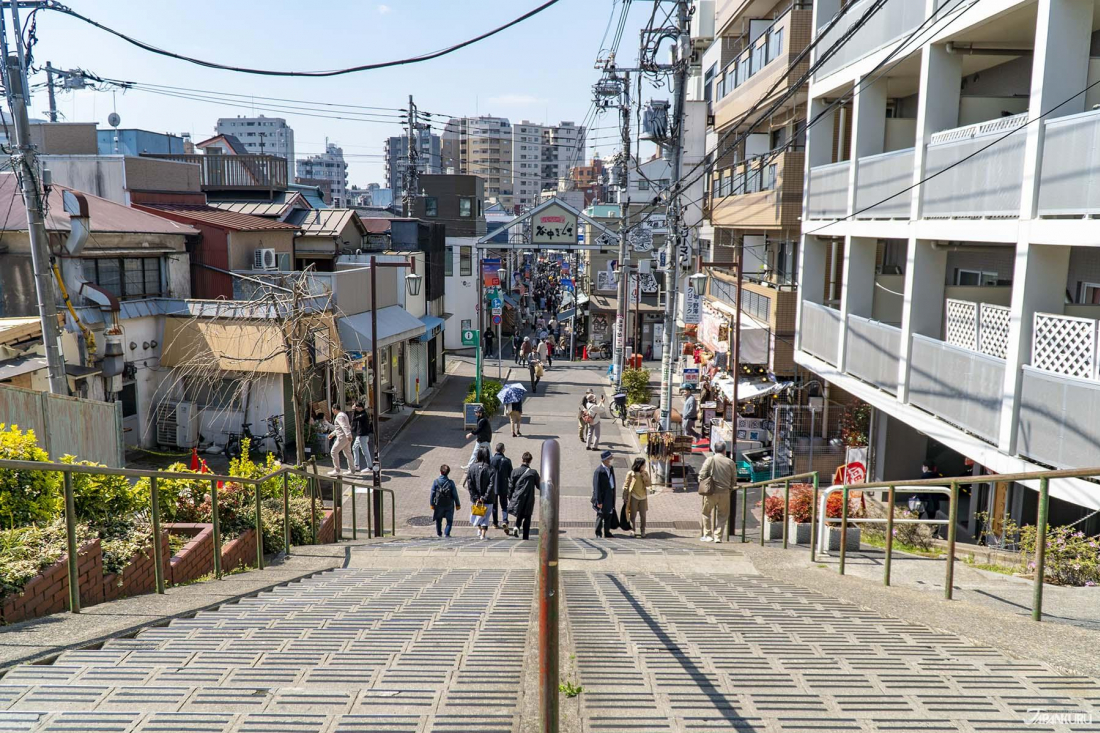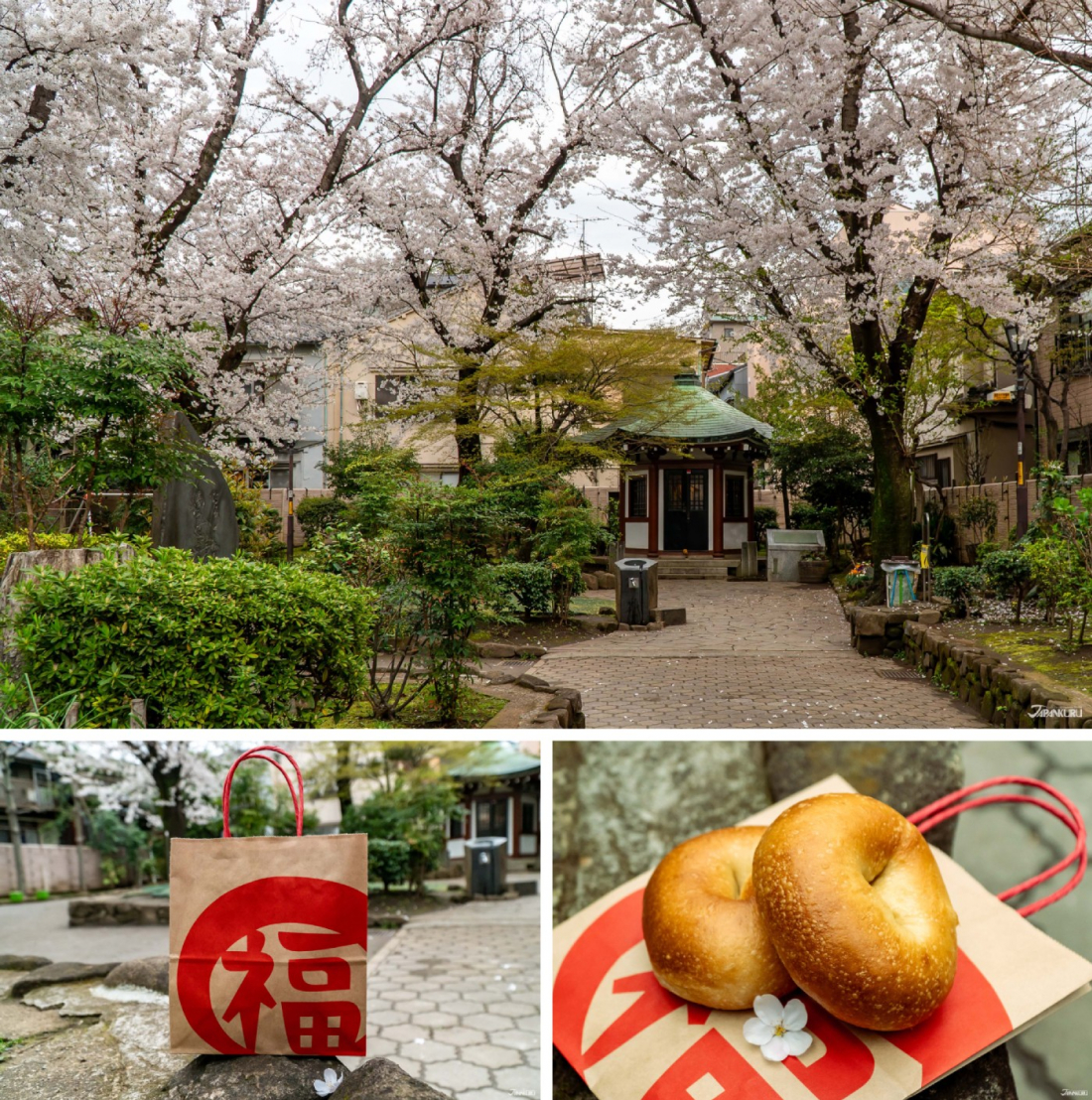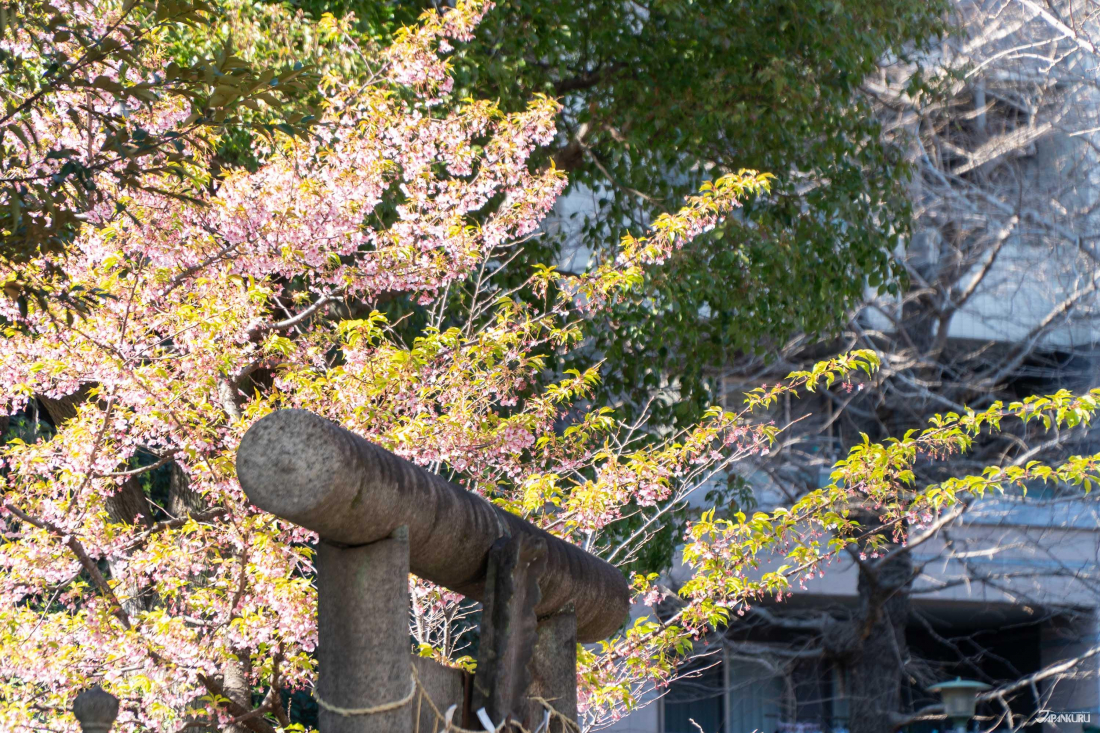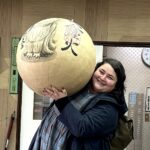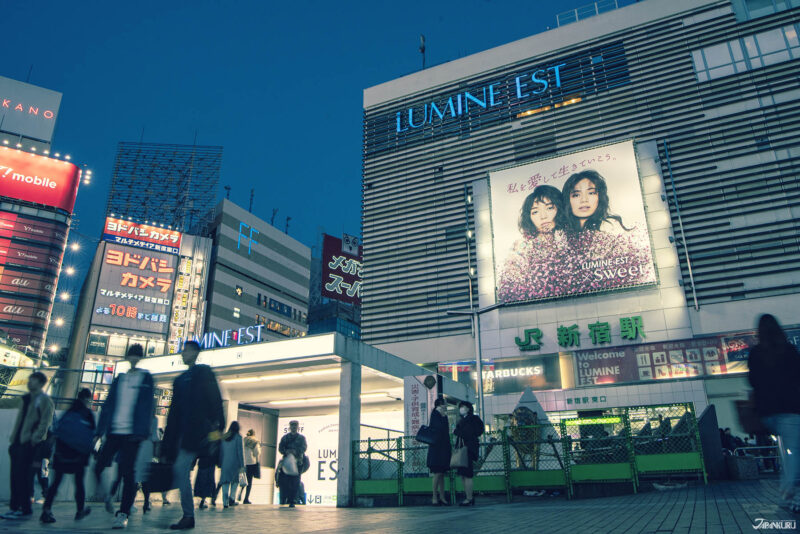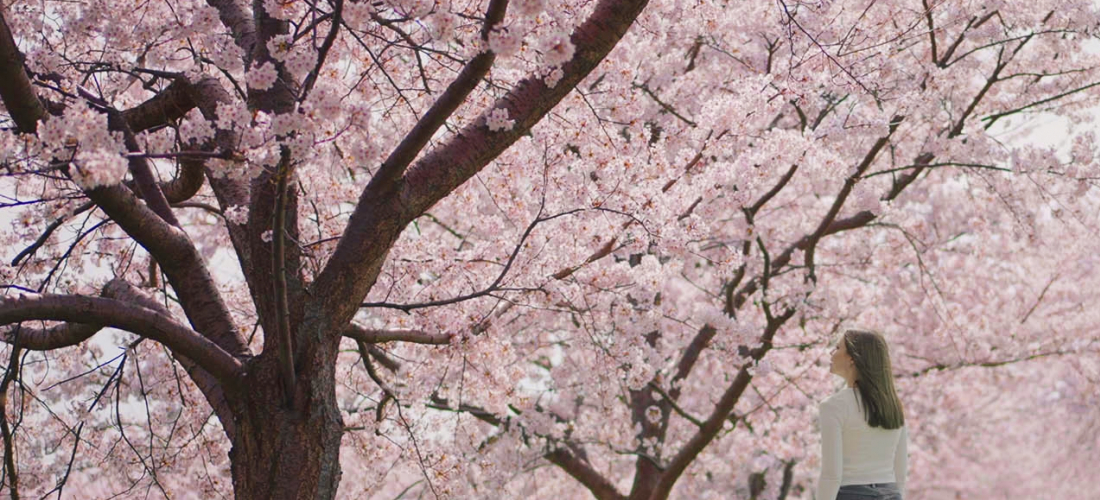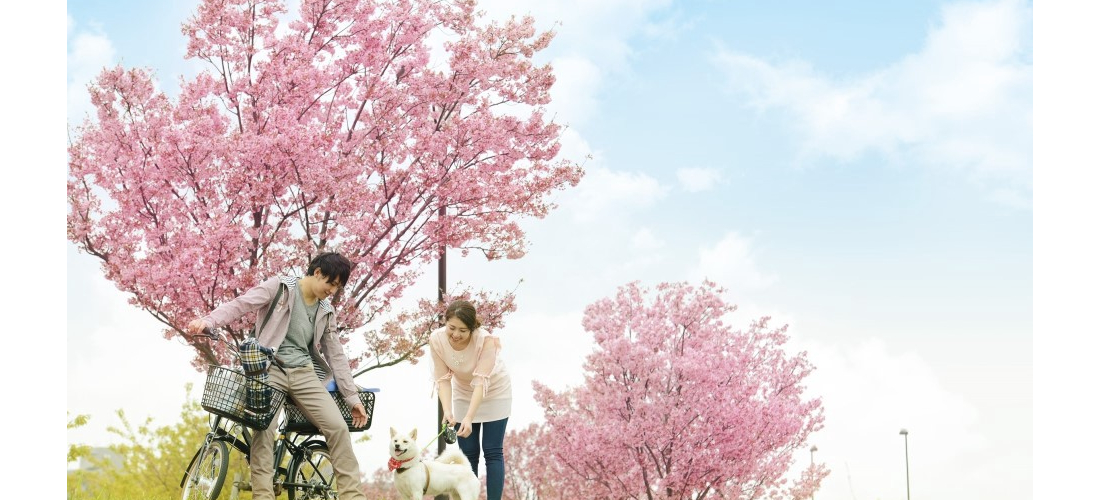CONTENTS
Ueno Park is nice, but these nearby sakura spots are just as beautiful without the crazy crowds. Join us on an Ueno area cherry blossom tour full of local recommendations, highlighting some of Tokyo’s best-kept secrets!
An Ueno Area Cherry Blossom Tour, Without Ueno Park
Tokyo is beautiful in the spring, but it's also busy, and one of the most extreme examples of this sakura season trend can be found in Ueno. As soon as cherry blossom season begins in eastern Japan, people flock to Ueno Park from far and wide, arriving in a steady flood to admire the beauty of this Japanese phenomenon. As Tokyo locals who spend a lot of time in the Ueno area, all of us on the Japankuru team can understand the appeal. But having hung around Ueno and the neighboring areas for a while now, we also know that Ueno Park isn't your only option for "hanami" (花見/cherry blossom viewing) nearby. The Ueno area at large is, in fact, an amazing place for cherry blossoms even if you never step foot in Ueno Park! And if you avoid the magnetic pull of the park, you'll actually find that this part of Tokyo is quiet and sometimes even quaint, with plenty of parks, gardens, and other peaceful places to enjoy the season.
So join us on this Ueno area cherry blossom tour as we snub Ueno's most famous attraction, and instead go for the kind of little hidden gems that locals tend to prefer, tucked away in little enclaves of Tokyo that are a little more residential, retro, or even risque. Some of Tokyo's best cherry blossom spots are the little ones you've never heard of, and we've got a few great recommendations for anyone visiting Ueno.
1 🌸 Ono-Terusaki Shrine
You can certainly begin this tour with Ueno Park if you want to see what all the fuss is about, but our first stop is about ten minutes away on foot, in a nearby neighborhood called Iriya (easily accessible from Iriya Station, Uguisudani Station, or even Ueno Station). We're starting small with Ono-Terusaki Shrine, but the inconspicuous size and location of this little shrine belies a long history, since it's actually over 1,000 years old! Ono-Terusaki Shrine was established in the year 852 to enshrine Ono Takamura, a deified Japanese scholar known for his tanka poetry, and these days the shrine's small scale only leaves room for one cute little cherry blossom tree on the grounds. But aside from this early-blooming cherry blossom tree with vivid pink petals, visitors also come to Ono-Terusaki for other purposes during sakura season.
Just about each and every one of Japan's uncountable shrines and temples has its own official seal, which is referred to in Japanese as a "goshuin" (御朱印), and if you've been to a few of these shrines and temples you might have noticed the tradition of collecting these seals in a book called a "goshuincho" (御朱印帳). (Experienced travelers might already have a goshuincho of their own!) These goshuin seals vary in appearance, reflecting the identity of whichever shrine or temple it represents, and Ono-Terusaki Shrine is known for have especially distinctive goshuin options, which have become a springtime must for collectors. The shrine offers different seals throughout the year, reflecting the seasons or upcoming holidays, but most of them feature eye-catchingly adorable illustrations, often highlighting the scholar-god Ono Takamura himself. For spring and cherry blossom season, goshuin lovers are usually pleased to find pretty pastel illustrations of Ono Takamura and his animal friends admiring the blooming flowers, printed on a floaty vellum. If you're interested in taking up the hobby yourself, Ono-Terusaki Shrine's goshuincho books are also quite popular. It's a fun way to get into the spirit of the season!
Ono-Terusaki Shrine (小野照崎神社)
2-13-14 Shitaya, Taito City, Tokyo
Shrine Office Hours: 9:00 – 16:00
Official Website (jp)
2 🌸 Motomishima Shrine
Literally on the other side of the train tracks from Ueno Park, this next neighborhood fits perfectly into that stereotype, because the Uguisudani area is in fact notorious for an almost inexplicable number of Japan's famous love hotels. Then again, while it's certainly a seedy chunk of Tokyo, and maybe not ideal for a family trip (if you don't want to explain what all the colorful signs are for), it's perfectly safe to visit. And if you walk the ten minutes from Ono-Terusaki Shrine, make it past the awkward couples who are trying not to meet your eye, and brave the sketchy scenery, you'll be suitably rewarded with the beauty of Motomishima Shrine. Established in the year 1281 by a military commander who saw his calling in a dream, this little shrine feels far removed from its scruffy surroundings, in some ways literally. If you visit in spring and climb the steep staircase separating the shrine hall from the streets below, you'll find yourself passing under a heavenly veil of pale pink cherry blossoms.
Part of what makes Motomishima Shrine so appealing is that the lush canopy of cherry blossoms is actually made up of two different varieties that have different blooming seasons, which means that you can visit throughout the spring to enjoy the scenery. The majority of the flowers blooming over the steps and in the inner part of the shrine are the whitish-pink Somei Yoshino (ソメイヨシノ), Tokyo's most common variety of cherry blossom, and you can generally guess when they'll be in bloom by taking a look at Tokyo's more famous sakura spots (like Ueno Park). But closer to the shrine gate, Motomishima Shrine also has a "kan-zakura" (寒桜) tree, with far-reaching branches that bloom big and bright, and vibrant pink petals that open early each March. If you venture forth through the maze of Uguisudani backstreets and make your way past all the love hotels, we don't think you'll regret a visit to see Motomishima Shrine's picture-perfect cherry blossoms.
(Goshuin collectors new and old might also be interested in Motomishima Shrine's elegant options!)
Motomishima Shrine (元三島神社)
1-7-11 Negishi, Taito City, Tokyo
Official Twitter
3 🌸 Nippori South Park
The shrines in this area north of Ueno Park are beautiful, but they're not great places to enjoy one of the most enjoyable traditions of Japanese cherry blossom season, which is the hanami picnic! If you're looking for a nice place to spread out a blanket (or a "blue sheet" tarp as the locals do) and nibble on some snacks while enjoying the warm weather and the beautiful cherry blossoms, nearby Nippori South Park (日暮里南公園/Nippori Minami Koen) is the perfect place for it. It's got a local park feel with a surprising amount of space to spread out in, and it's especially popular with young families in the area thanks to the playground equipment for kids!
Nippori South Park (日暮里南公園)
5-19-1 Higashinippori, Arakawa City, Tokyo
Official Website (jp)
4 🌸 Yanaka Cemetery
If your image of cemeteries is grim or dreary, you might be surprised by Yanaka Cemetery, which is actually the most popular and lively cherry blossom spot on this list. Once used as a cemetery for the nearby Tennoji Temple, the tightly-packed labyrinthian rows of gravestones and other monuments will leave no doubt in your mind as to what this place really is, but the calming atmosphere and plentiful greenery, along with the slow but steady stream of visitors, makes it feel more like a public park than some morbid temple graveyard. Visitors pick their way across the uneven paving stones that form narrow paths between the headstones, waltz past beds of fragrant irises, and of course spend plenty of time staring up at the dreamy tendrils of pink cherry blossoms.
Perhaps the most iconic part of the cemetery is the central road that cuts a path through the center of the grounds heading towards Tennoji Temple, which is lined with tall cherry blossom trees that reach out overhead, with the ends of the smallest branches just brushing against one another. Japan loves its cherry blossom tunnels! If you take the time to stroll along the cemetery's smaller pathways, however, it's not hard to get away from the small crowd that gathers on the main road, and there are plenty of beautiful cherry blossom spots that you can have all to yourself – at least for a couple minutes. You might even come face to face with (the headstones of) a few famous Tokyoites, like the novelist printed on Japan's 5,000 yen bills, Ichiyo Higuchi, and the country's very last shogun, Tokugawa Yoshinobu.
Yanaka Cemetery (谷中霊園)
7-5-24 Yanaka, Taito City, Tokyo
Official Website (jp)
5 🌸 Yanaka Cafe Hopping
Aside from the peace and quiet of its famous cemetery, the Yanaka neighborhood is actually known as a bustling area scattered with trendy cafes and remnants of Japan's retro Showa era (1926-1989). Even right next to Yanaka Cemetery, there are a handful of cute coffee shops that offer busy cherry blossom chasers a chance to take a little break and even enjoy some cherry-blossom-themed treats! Yanaka Apartment is a collection of tiny shops with an artsy little design shop, a small gallery, and a couple cafes, including Smpl. Smpl's tasty pressed sandwiches are a great deal, but during cherry blossom season, you won't want to miss out on their sweet pink sakura-berry smoothie!
Smpl Cafe
Yanaka Apartment 101, 7-5-25 Yanaka, Taito City, Tokyo
Hours: 10:00 – 18:00 (closed Wed)
Official Website (jp)
6 🌸 Yanaka Ginza + Okakura Tenshin Memorial Park
Not far away is Yanaka's famous market street, Yanaka Ginza, which looks like it came straight out of a classic film from some bygone era. The shopping street is fun to just look around, and it's especially exciting for cat lovers (since local strays have inspired whole cat-themed stores), but during the spring it's the perfect stop if you're looking to buy some snacks for a cherry blossom viewing picnic! There are counters selling Japanese croquettes, shops offering adorable cat-paw pastries, and a variety of bakeries selling baked goods for easy snacking. We went for bagels from Fuku Bagel, a Gunma bagel specialist with a shop in Yanaka Ginza. (They frequently offer seasonal bagel fillings and flavors, but those sell out quick, so we just picked up some plain ones!)
Yanaka Ginza (谷中銀座)
3-13-1 Yanaka, Taito City, Tokyo
Official Website (jp)
Fuku Bagel (福ベーグル)
3-10-6 Nishinippori, Arakawa City, Tokyo
Hours: 10:00 – 16:00
Official Website (jp)
Once you've collected a picnic basket full of tasty Yanaka treats, you can of course take them to picnic at any of the many spots in this article, but we also have one more recommendation nearby. Okakura Tenshin Memorial Park is a tiny enclave off a small side street, but it provides the perfect place to snack on some street food! Sit on the stone wall under the tall cherry blossom trees, and enjoy your nibbles while watching a steady drift of cherry blossom petals from above.
Okakura Tenshin Memorial Park (岡倉天心記念公園)
5-7-10 Yanaka, Taito City, Tokyo
See Ueno in Spring Through Local Eyes!
To the casual visitor, it's not hard to imagine the Ueno area as a riot of crowds and chaos, but take a good look and that's not all you'll find in this unique part of Tokyo. Today we took you on a cherry blossom tour of Shinto shrines, local parks, shopping streets, and even historic cemeteries, and we didn't even begin to exhaust our options in the Ueno area. So next time you're in Tokyo, you can visit the city's most popular sakura spots if you want, but look for all the local nooks and crannies too – you might just find some hidden gems!
For more info and updates from Japan, check Japankuru for new articles, and don't forget to follow us on X (Twitter), Instagram, and Facebook!
PROFILE
Half a lifetime ago I came to Japan for a semester abroad... and I never left. I guess I really like the place! I'd love to hear all your favorite things and recommendations in Tokyo via the @Japankuru instagram or twitter (X).
COMMENT
FEATURED MEDIA
VIEW MORE
・The new Tokyo flagship for Volcom Japan is a center for all things skateboarding, street fashion, art, and culture, all in the heart of Shibuya! ・Volcom日本旗艦店東京澀谷登場 本格派滑板街頭潮流藝文新據點 #Volcom #japankuru #shibuya #日本購物 #日本潮流 #日本街頭時尚 #澀谷 #東京購物 #東京購物推薦 #東京潮店 #澀谷潮店 #滑板 #雪板 #衝浪 #볼컴 #시부야

Which snacks make the best Japanese souvenirs?~ Jaga Pirika ~ 일본과자 선물 뭐하지?~자가피리카 편~ #pr #calbee #jagapokkuru #japanesesnacks #japanesefood #japanesesouvenir #japantravel #japantrip #naritaairport #hokkaido #나리타국제공항 #일본여행선물 #흔하지않은기념품 #일본쇼핑리스트 #일본과자추천 #고구마과자 #일본간식추천 #일본면세점쇼핑 #개별포장 #일본감자칩 #도쿄나리타공항면세점 #현지인추천 #일본여행 #일본기념품리스트 #자가포쿠루 #자가피리카

Asakusa's Sanja Matsuri, one of the biggest festivals in all of Tokyo, is almost here! Make sure you check out the festival route so you don't miss all the festivities this May. #asakusa #sanjafestival #sanjamatsuri #asakusashrine #sensoji #sensojitemple #japanesefestival #shintoshrine #japaneseculture #tokyo #tokyotrip #tokyotravel #asakusasightseeing #matsuri #japantrip #japantravel #springinjapan #tokyotravel #japankuru #산자마츠리 #아사쿠사 #일본마츠리 #일본여행 #일본5월

Odaiba's DiverCity Tokyo Plaza is home to the famous real-size 20m-tall Unicorn Gundam, and the popular shopping center has even more Gundam on the inside! Check out the Gundam Base Tokyo on the 7th floor for shelves upon shelves of Gunpla, and the Gundam Base Tokyo Annex on the 2nd floor for cool anime merchandise. Both shops have tons of limited-edition items! #pr #odaiba #tokyo #tokyotrip #japantrip #japantravel #PR #divercity #divercitytokyoplaza #tokyoshopping #gundam #unicorngundam #gundambasetokyo #anime #otaku #gunpla #japankuru #오다이바 #다이바시티도쿄 #오다이바건담 #건담 #일본건담 #건프라 #건담베이스도쿄

Evangelion, in miniature!? Tokyo's SMALL WORLDS Miniature Museum is actually a must-see for anime lovers, thanks to the tiny Evangelion Hangar and Tokyo-III... plus a whole universe of other scenes both real and fictional. #smallworlds #smallworldstokyo #tokyotrip #tokyotravel #evangelion #eva #anime #miniature #miniatures #animefigure #japantrip #japantravel #에반게리온 #스몰월드 #에반겔리온 #スモールワールズ #오다이바 #아리아케

Have you sat down for a snack at Sumida Aquarium yet? This aquarium next to Tokyo Skytree is known for its penguins and garden eels, but we can't get enough of their cute snacks! There are lots of good seats around the aquarium, too, so it almost feels like one big cafe. 🐧 • Find out more at Japankuru.com! (Link in bio.) • #japankuru #sumidaaquarium #skytree #tokyoskytree #solamachi #sumida #tokyo #tokyotrip #tokyotravel #aquarium #japanesesweets #themecafe #すみだ水族館 #Japan #日本 #일본 #Japon #ญี่ปุ่น #Japão #япония #japantravel #日本旅行 #日本旅遊 #japan_of_insta #japantrip #traveljapan #japan🇯🇵 #igerstokyo #explorejapan

For anime fans, the Evangelion areas at Small Worlds Miniature Museum are a must see! The tiny miniature people in the Evangelion Hangar look like ants beneath the moving Unit-01, Unit-00, and Unit-02! And over in Tokyo-III, characters like Shinji, Rei, and Katsuragi live life on a miniature scale. #odaiba #tokyo #tokyotrip #japantrip #japantravel #ariake #smallworlds #miniaturemuseum #smallworldstokyo #tokyotravel #evangelion #eva #anime #miniature #miniatures #animefigure #japankuru #스몰월드 #에반게리온 #오다이바 #오다이바관광 #오다이바스몰월드 #미니어쳐

